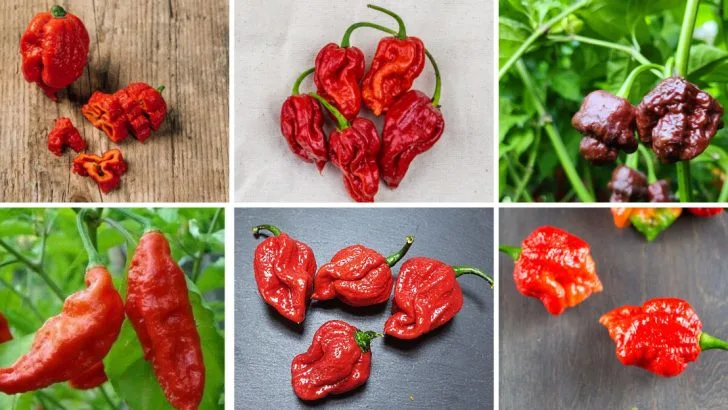If you love adding a little extra kick to your meals, growing your own spicy peppers can be a fun and rewarding way to spice things up in the kitchen. Peppers come in all shapes, sizes, and heat levels, but if you’re after some serious heat, there are certain varieties that will really turn up the temperature. From the fiery Carolina Reaper to the classic Habanero, these peppers pack a punch and are perfect for anyone looking to add some bold flavor to their dishes.
Growing spicy peppers can be an exciting challenge, especially as you watch your plants produce some of the hottest varieties out there. The key is choosing the right peppers for your climate and ensuring they get enough warmth and sunlight to really thrive. Whether you’re looking to make your own hot sauce, spice up a salsa, or just enjoy the thrill of growing something with a little heat, these peppers will definitely deliver. So, get ready to heat things up in your garden!
Carolina Reaper
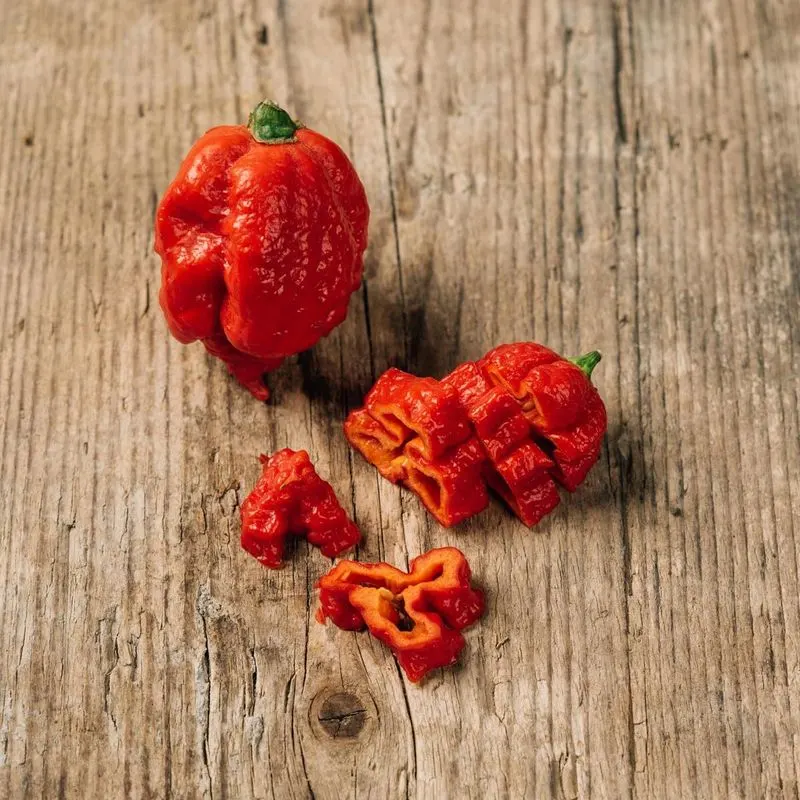
The Carolina Reaper holds the crown as the hottest pepper globally, with a Scoville rating exceeding 2,200,000 units. Its gnarled, bumpy texture and small size hide a fiery punch that’s unmatched.
Due to its intense heat, it should be handled with care, using gloves when harvesting. Despite its fieriness, it also boasts a surprisingly fruity undertone, making it popular for hot sauces.
Growing this pepper requires patience and a sunny spot in your garden, but the payoff is a conversation starter for any meal.
Trinidad Moruga Scorpion
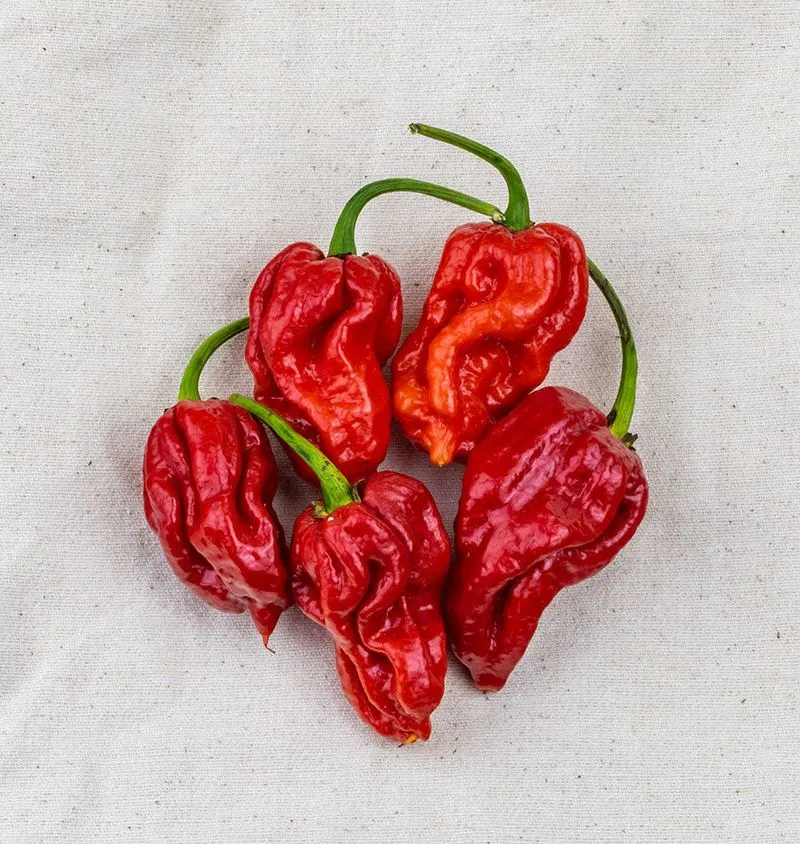
Originating from the Caribbean, the Trinidad Moruga Scorpion is another fiery contender, scoring around 2,009,231 on the Scoville scale. Its smooth, wrinkled skin and bulbous shape are distinctive.
Known for its gradual heat build-up, it starts deceptively mild before unleashing a scorching burn. However, it also offers a sweet, floral flavor that adds complexity.
Best grown in warm climates, these peppers thrive with regular watering and full sun exposure, making them a rewarding but challenging plant for spice enthusiasts.
7 Pot Douglah
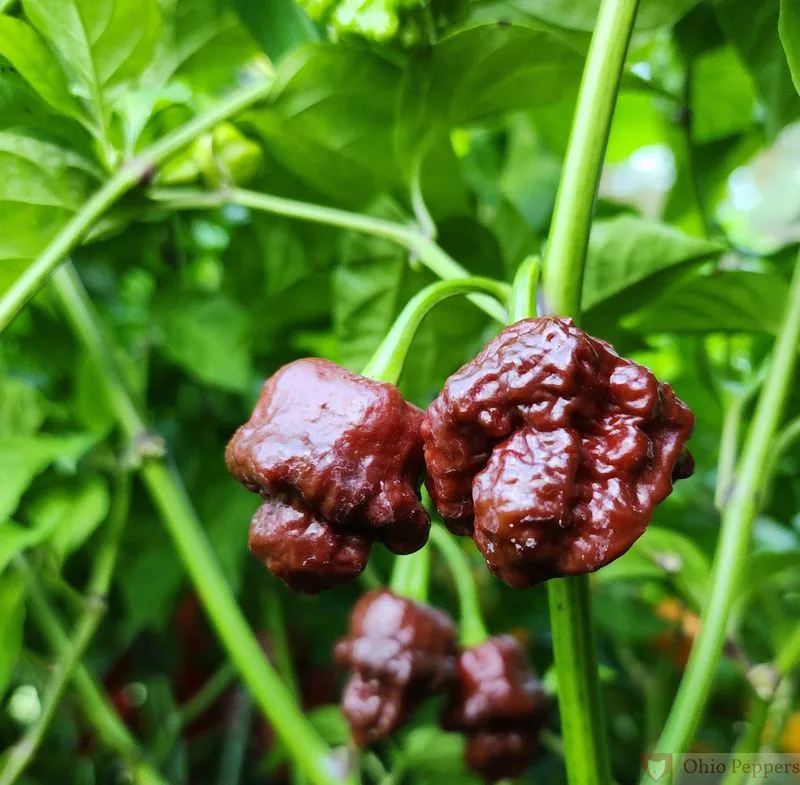
The 7 Pot Douglah is a rare and potent variety, scoring over 1,853,936 Scoville units. Its deep chocolate brown color is as striking as its heat.
Known for its rich, nutty flavor alongside the intense spiciness, it’s a favorite among chili aficionados. Handling requires caution due to its capsaicin content.
This pepper thrives in warm, humid conditions, making it ideal for greenhouses or warm outdoor gardens. Regular pruning encourages more fruit production, providing an ample supply of heat.
Ghost Pepper (Bhut Jolokia)
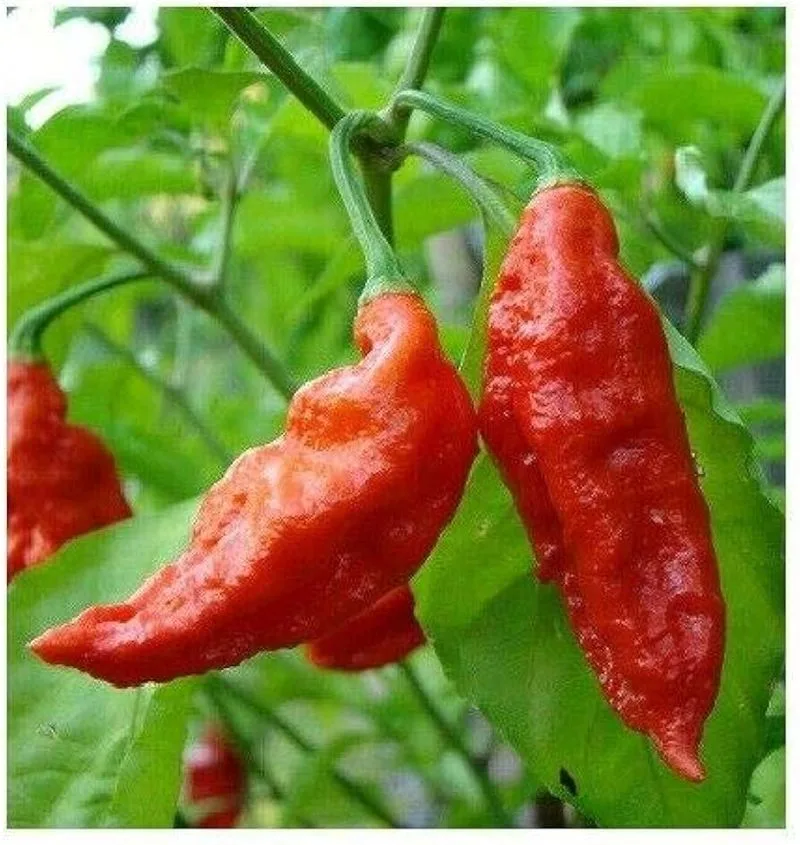
The Ghost Pepper, or Bhut Jolokia, was once the world’s hottest pepper, with a Scoville rating of over 1,041,427 units. Its elongated shape and red-orange hue make it easily recognizable.
Famous for its intense heat, it’s often used in extreme cooking challenges. Despite the spice, it offers a slightly sweet, smoky flavor that enhances dishes.
This pepper needs a long, warm growing season and plenty of space, making it a demanding yet rewarding plant for spice lovers.
Naga Viper
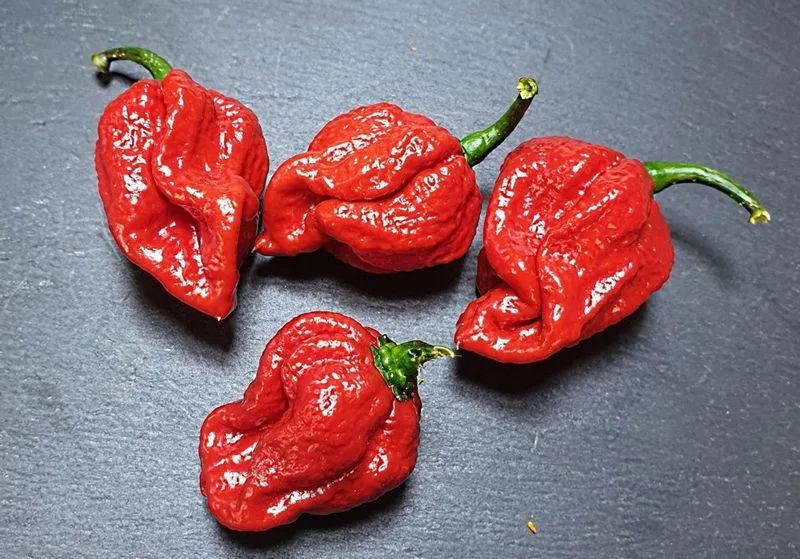
The Naga Viper is a hybrid pepper known for its volatile heat, reaching up to 1,382,118 Scoville units. Its wrinkled, tapered pods are visually striking.
This pepper offers a blend of fruity and spicy flavors, perfect for adventurous cooks. Despite its heat, it’s praised for an unexpectedly pleasant taste.
Successful cultivation requires warm temperatures and consistent moisture, making it suitable for dedicated gardeners who enjoy a challenge.
Infinity Chili
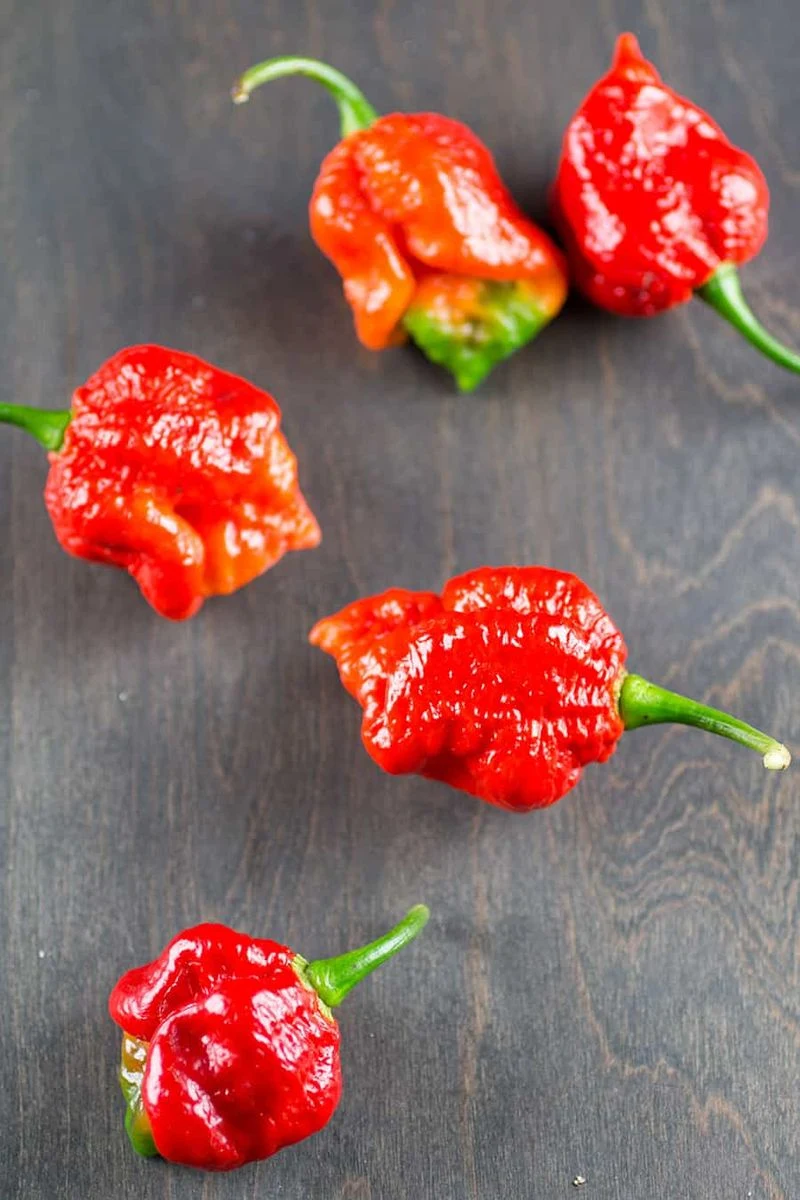
Holding a temporary record as one of the hottest peppers, the Infinity Chili scores around 1,176,182 on the Scoville scale. Its small, red fruit packs a significant punch.
This pepper is cherished for its intense burn and subtle fruity notes, adding depth to spicy dishes. Caution is advised when handling, to avoid skin irritation.
It thrives with ample sunlight and warmth, demanding care and protection from pests for optimal growth. Cultivating this pepper promises a fiery addition to any meal.
7 Pot Barrackpore
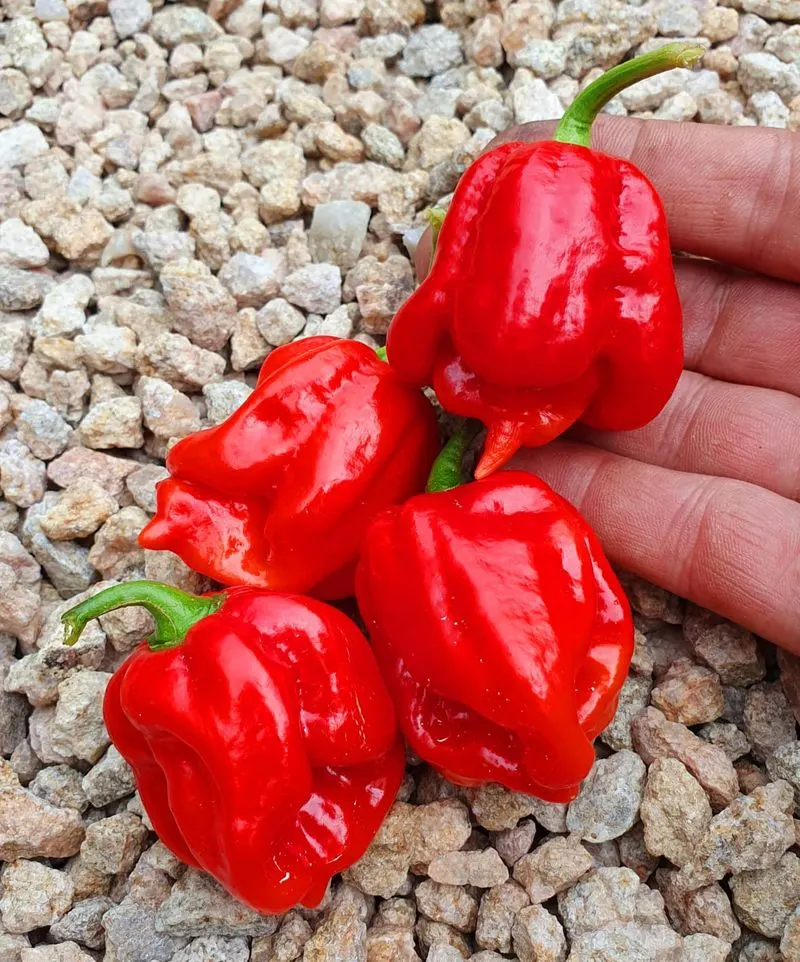
The 7 Pot Barrackpore is another formidable contender, boasting over 1,300,000 Scoville units. Its rugged appearance is matched by its intense heat.
Known for a fruity yet fiery taste, this pepper enhances hot sauces and marinades. Despite its heat, it’s favored for its rich flavor profile.
Growing requires warmth and patience, with regular watering and sunlight being essential. It’s an excellent choice for experienced gardeners looking to spice up their harvest.
Komodo Dragon Pepper
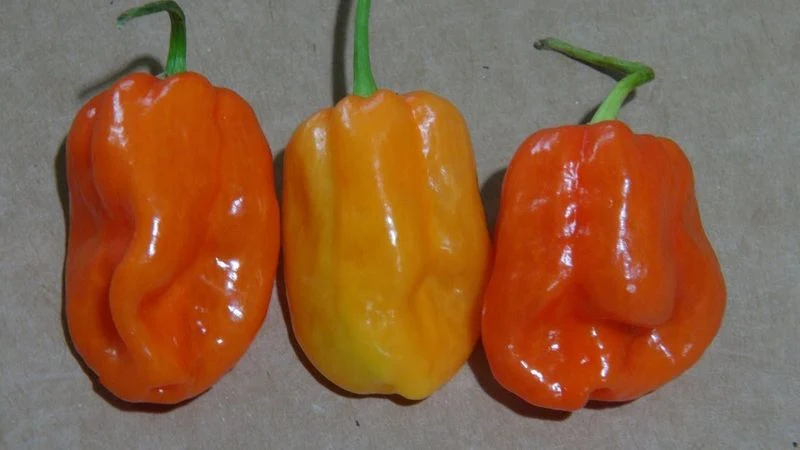
The Komodo Dragon pepper is a relative newcomer, packing around 1,400,000 Scoville units. Its fiery red color adds a dramatic touch to any garden.
Despite its fearsome name, it offers a rich fruitiness alongside the heat, making it versatile for culinary use. Handling should be cautious due to its high capsaicin content.
This pepper requires warm temperatures and ample sunlight, thriving in well-drained soil. It’s a rewarding plant for those seeking a blend of heat and flavor.
7 Pot Brown
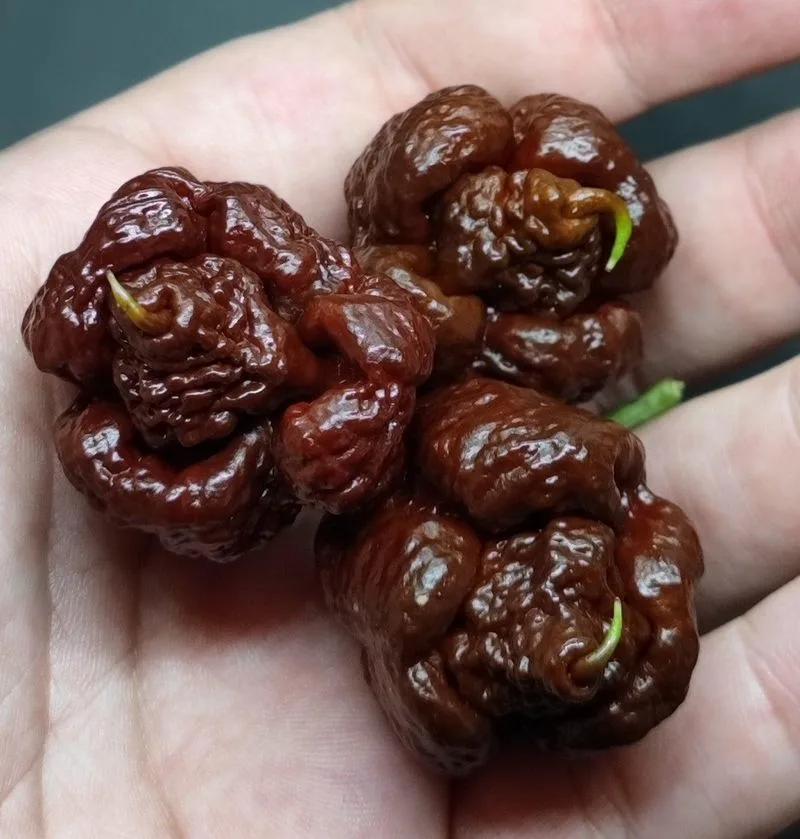
The 7 Pot Brown, also known as the 7 Pot Chocolate, is another high-ranking pepper, reaching over 1,200,000 Scoville units. Its rich chocolate color is as enticing as its heat.
This pepper is celebrated for its earthy, nutty flavor, which complements its fiery profile. Ideal for hot sauces, it’s a must for spicy food enthusiasts.
Thriving in warm, sunny conditions, it demands careful handling and consistent care, rewarding gardeners with a unique and spicy harvest.
Scotch Bonnet
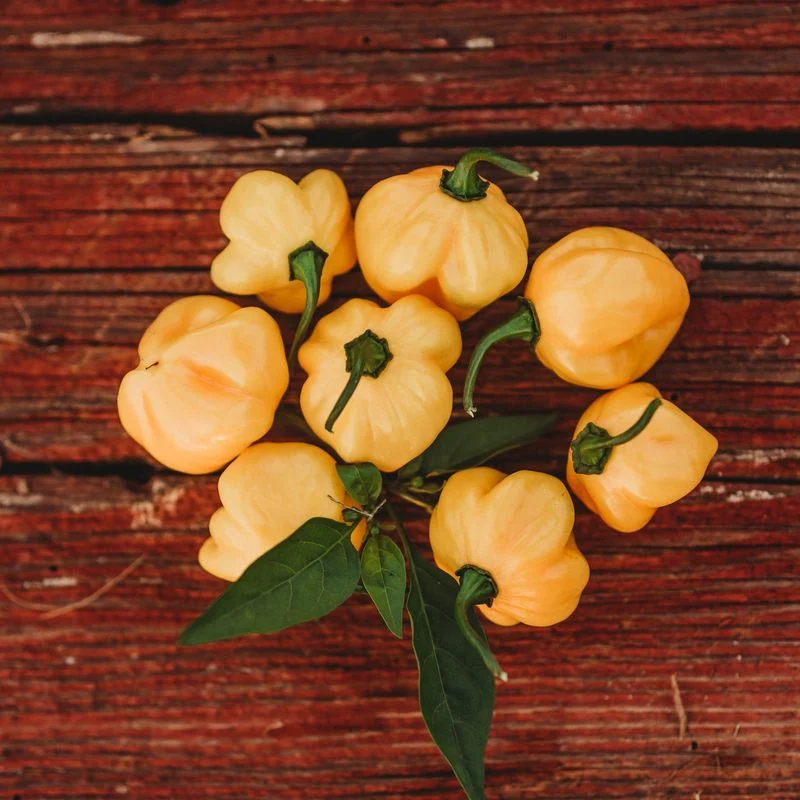
The Scotch Bonnet, with its distinctive squashed shape, scores about 100,000 to 350,000 Scoville units. Known for its fruity, tropical flavor, it’s a staple in Caribbean cuisine.
Despite its moderate heat, it offers a vibrant taste that enhances dishes without overwhelming them. This pepper is perfect for those who enjoy a balance of spice and flavor.
It thrives in warm, humid conditions, making it ideal for tropical gardens, and is a favorite for sauces and salsas.
Habanero
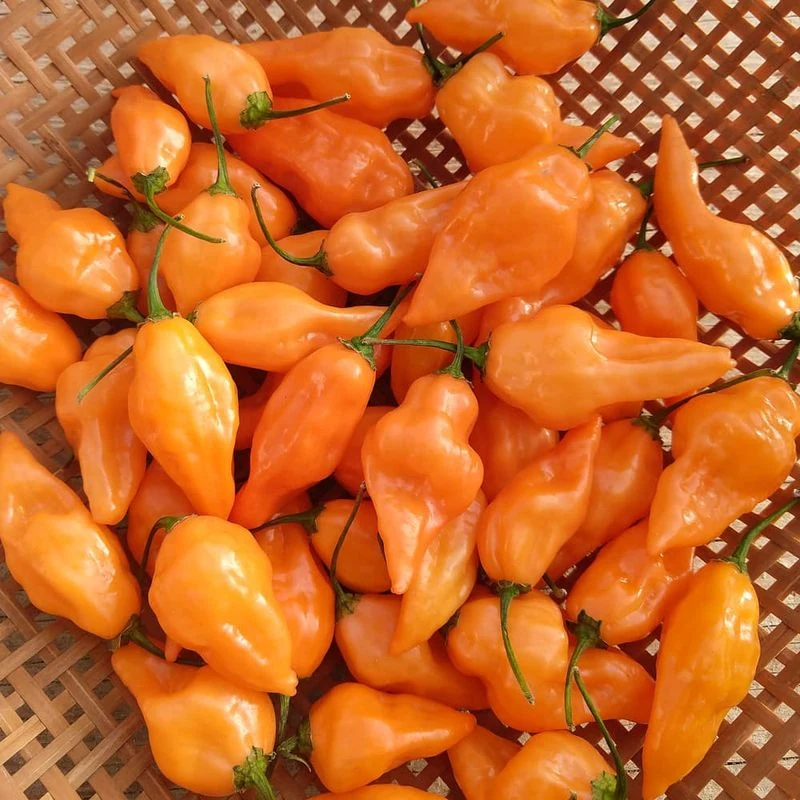
Habaneros are popular for their fiery heat and fruity flavor, scoring between 100,000 to 350,000 on the Scoville scale. Their small, lantern-like shape is iconic.
Known for a citrusy, floral taste, they’re widely used in hot sauces and condiments. Despite their heat, they offer a refreshing flavor that’s hard to resist.
These peppers require a sunny spot and regular watering, making them a relatively easy and productive plant for home gardens.
Fatalii
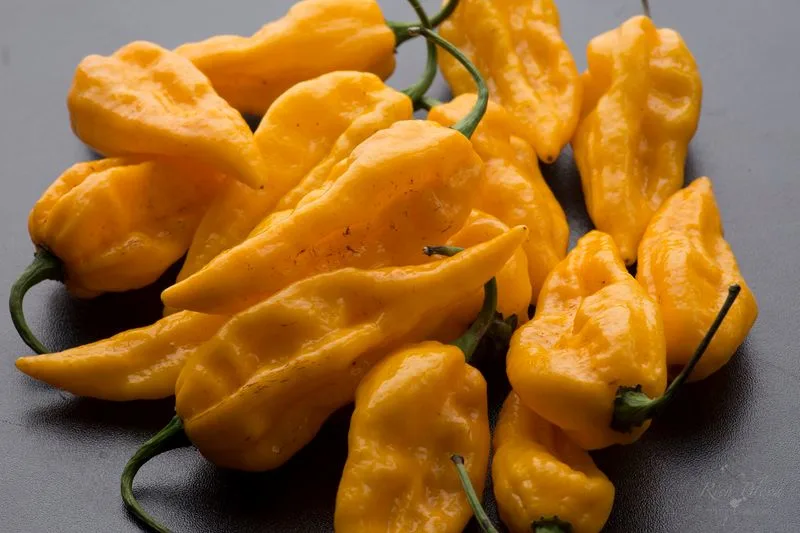
The Fatalii, native to Central Africa, is known for its quick, intense heat, scoring around 125,000 to 325,000 Scoville units. Its yellow color adds a sunny touch to the garden.
This pepper offers a unique citrusy flavor, making it a favorite for those who enjoy both heat and zest. Handling should be cautious due to its fiery nature.
Growing this pepper requires warm temperatures and full sunlight, thriving in well-drained soil. It’s perfect for gardeners seeking an exotic and spicy addition.
Aji Charapita
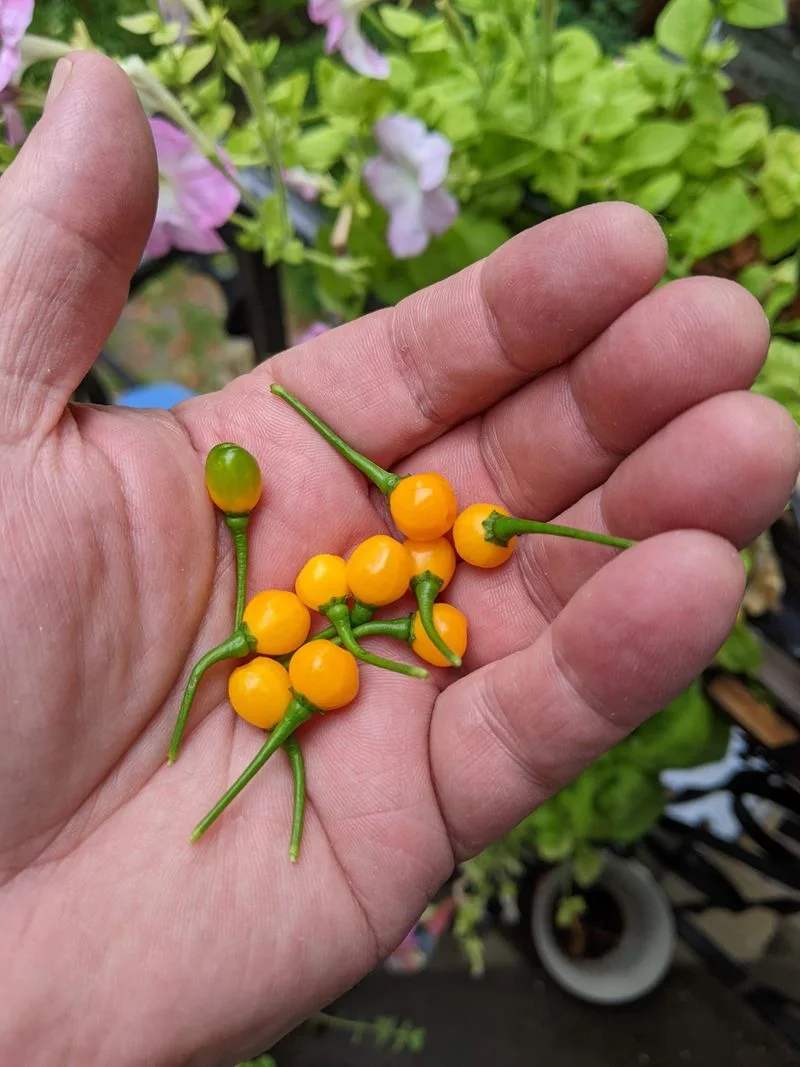
Considered the most expensive pepper due to its rarity, the Aji Charapita scores around 30,000 to 50,000 Scoville units. Its small, round fruit is a powerhouse of flavor.
Known for its fruity, slightly sweet taste, it’s a staple in Peruvian cuisine. Despite its moderate heat, it offers a unique flavor that enhances dishes.
This pepper thrives in warm climates, requiring consistent moisture and full sunlight. It’s a prized addition for gardeners seeking both flavor and novelty.
Jalapeño
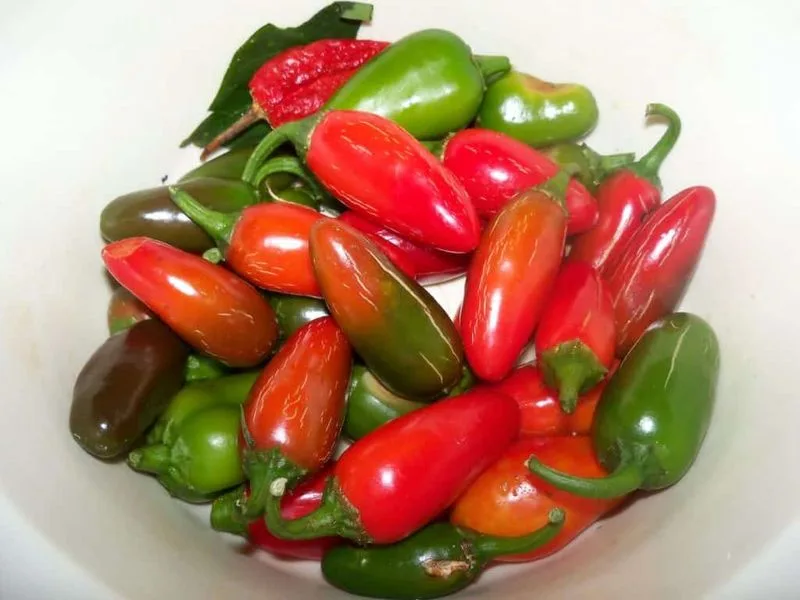
Jalapeños are a familiar favorite, offering a moderate heat level of 2,500 to 8,000 Scoville units. Their smooth, green appearance is easily recognizable.
Known for their crisp, juicy flavor, they’re versatile in various dishes, from salsas to stuffed appetizers. Despite their milder heat, they add a pleasant kick.
These peppers are easy to grow, needing plenty of sunlight and well-drained soil, making them a popular choice for home gardeners seeking reliable spice.
Serrano

Serrano peppers offer a step up in heat from jalapeños, ranging between 10,000 to 23,000 Scoville units. Their slim, elongated shape is distinctive.
Known for their bright, crisp flavor, they’re often used in Mexican cuisine for salsas and sauces. Despite their heat, they offer a refreshing taste.
These peppers thrive in warm environments and require regular watering, making them a suitable choice for dedicated gardeners. They’re perfect for adding a fresh, spicy kick to dishes.
Cayenne
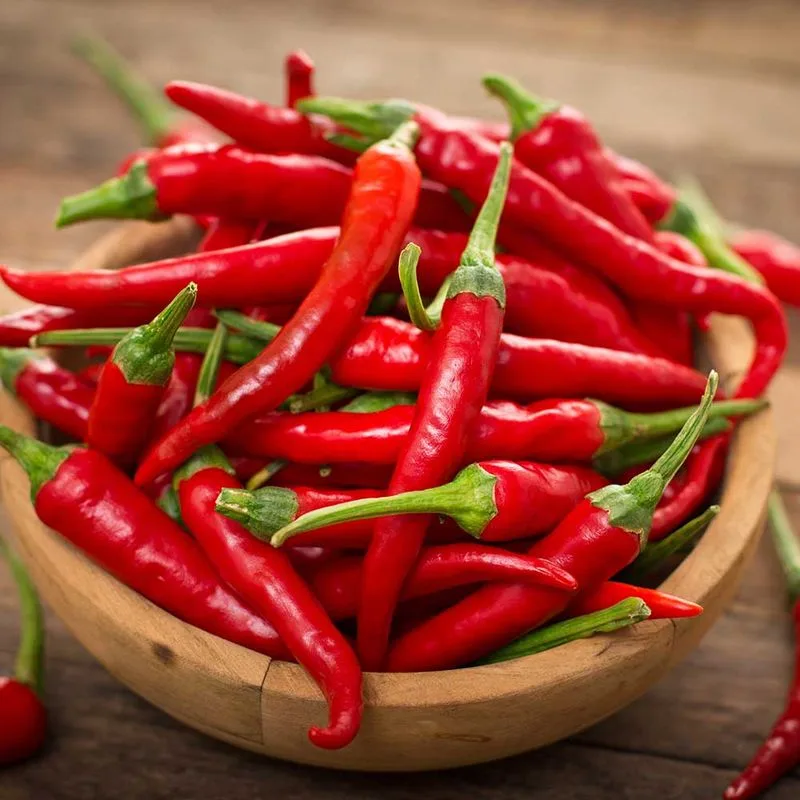
Cayenne peppers are synonymous with spice, scoring between 30,000 to 50,000 Scoville units. Their long, slender shape is iconic in the spice world.
Known for their pungent, earthy flavor, they’re dried and ground into powder or used fresh in dishes. Despite their heat, they’re essential in many cuisines.
These peppers require full sunlight and well-drained soil, thriving in warm conditions. They’re ideal for gardeners looking to produce their own spice mixes.
Tabasco
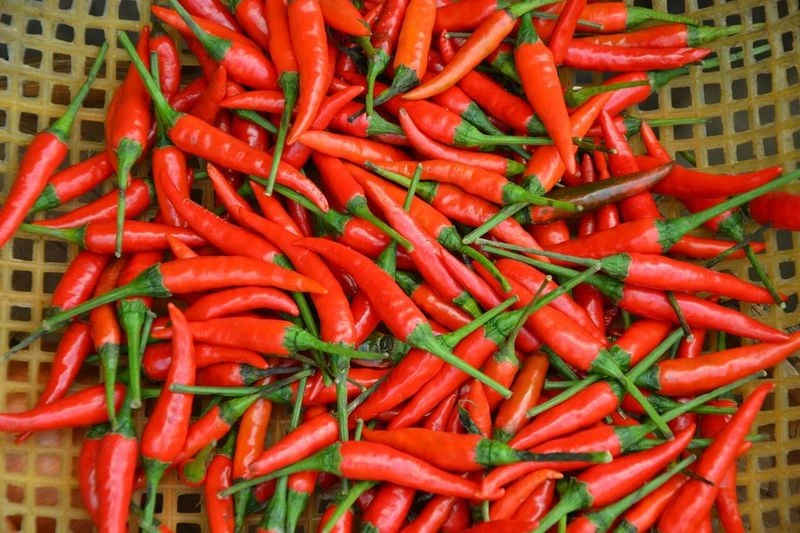
Tabasco peppers, famous for their role in Tabasco sauce, score between 30,000 to 50,000 Scoville units. Their small, slender shape is instantly recognizable.
Known for their tangy, spicy flavor, they’re a staple in many hot sauces. Despite their size, they pack a potent punch, making them popular for flavoring.
These peppers thrive in warm, humid conditions, requiring consistent moisture and sunlight. They’re a classic choice for gardeners aiming to create their own hot sauces.
Cherry Pepper

Cherry peppers, also known as Pimiento, offer mild heat, scoring around 500 to 1,000 Scoville units. Their round, plump shape is charming and adds visual appeal.
Known for their sweet, tangy flavor, they’re often used for stuffing or pickling. Despite their mild heat, they add a delightful taste to dishes.
These peppers require full sunlight and regular watering, making them a straightforward choice for gardeners seeking a mild yet flavorful harvest.
Banana Pepper
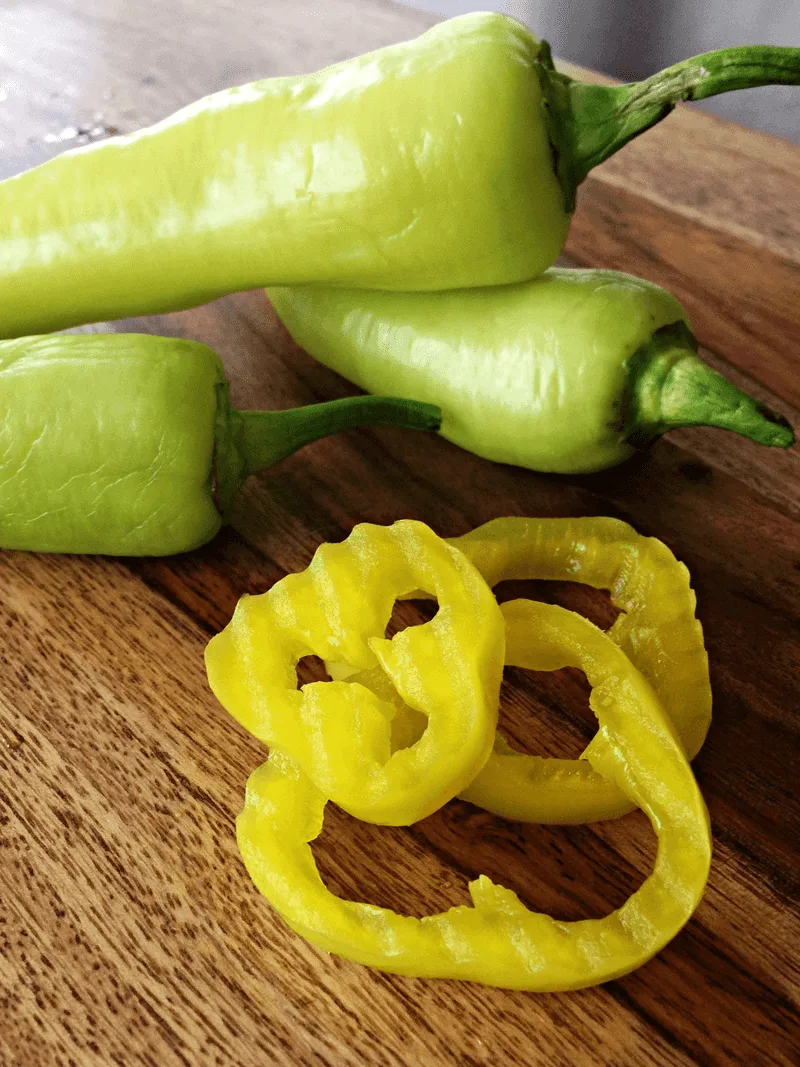
Banana peppers offer a mild, tangy flavor, with a Scoville rating of 0 to 500 units. Their long, yellow appearance is visually striking.
Known for their crisp, sweet taste, they’re perfect for salads, sandwiches, and pickling. Despite their lack of heat, they add a refreshing flavor.
These peppers are easy to grow, needing sunlight and consistent moisture, making them ideal for novice gardeners. They’re a delightful addition to any garden, offering versatility in culinary use.
Dragon’s Breath Pepper
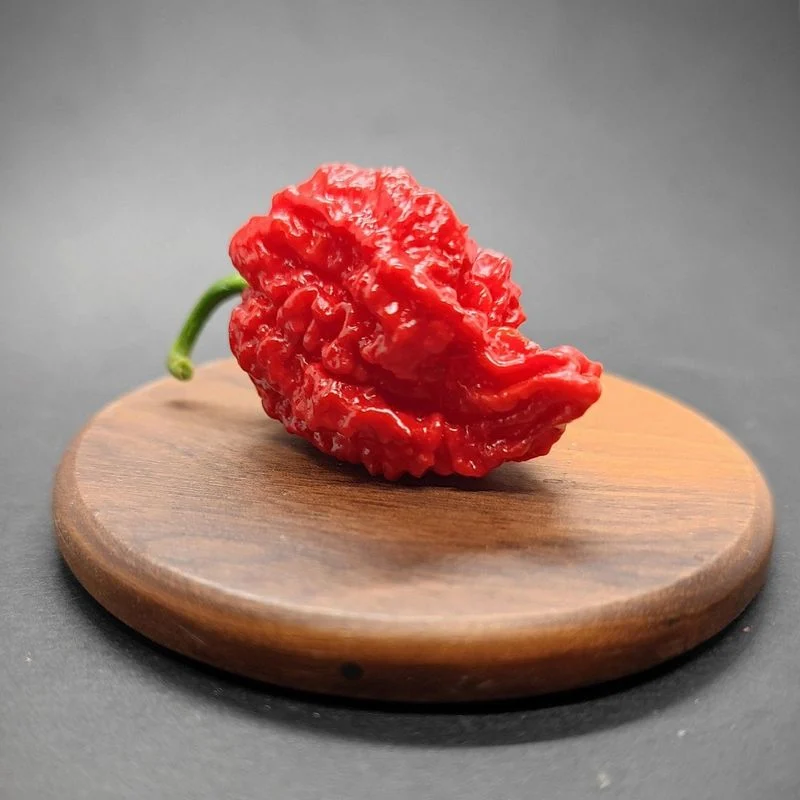
The Dragon’s Breath Pepper is a showstopper in the world of spicy peppers. Born from a collaboration between a hobbyist and scientists, this pepper boasts an intense heat that challenges the bravest of spice enthusiasts. Its vibrant red hue and bumpy texture make it a striking addition to any garden.
Caring for the Dragon’s Breath requires attention to watering and sunlight, ensuring the plant thrives. This pepper not only brings heat but also a sense of accomplishment for growers brave enough to cultivate it. Add this fiery gem to your garden and impress your friends with its legend.

